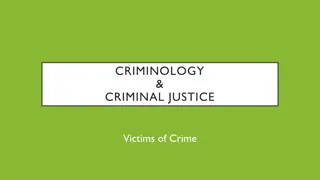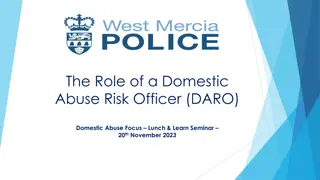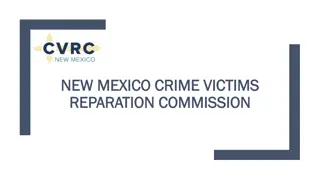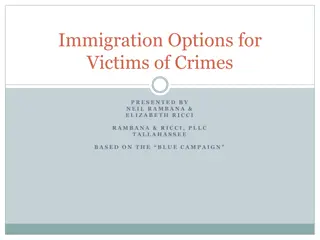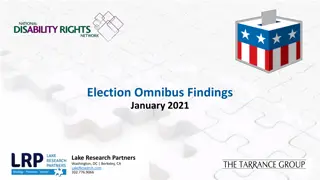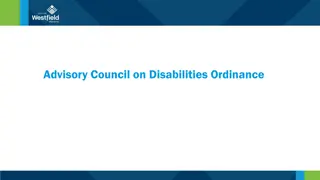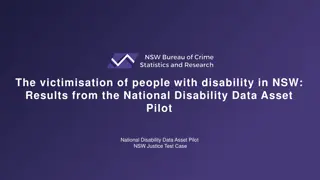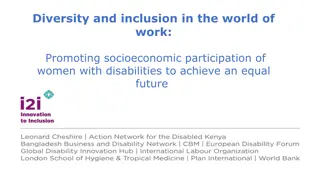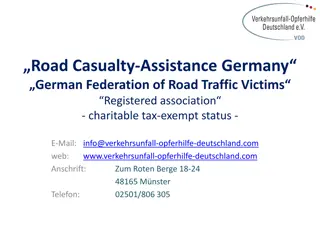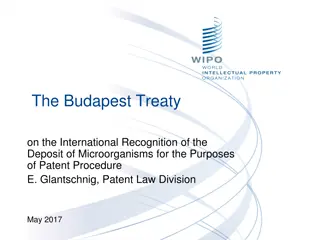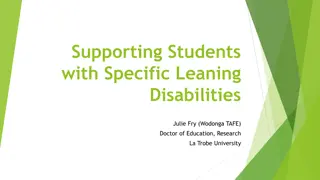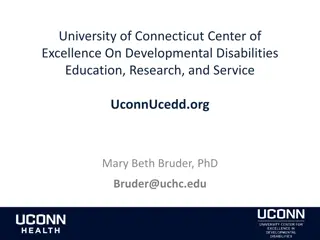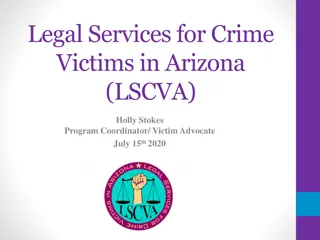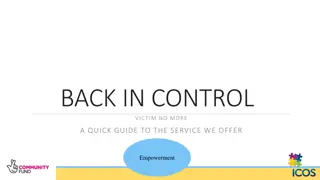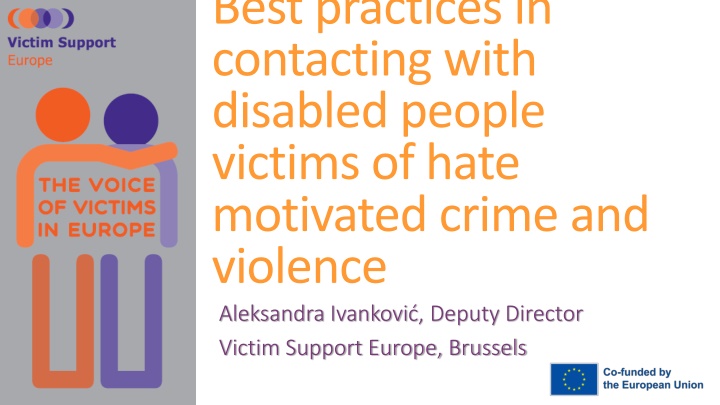
Contacting Disabled Victims of Hate Crimes: Best Practices & Support
Learn about best practices for contacting disabled individuals who are victims of hate crimes and violence. Discover insights on victimization rates, specific forms of victimization, victims' rights, needs in criminal proceedings, and personal characteristics. Gain valuable knowledge to better support and communicate with disabled victims effectively.
Download Presentation

Please find below an Image/Link to download the presentation.
The content on the website is provided AS IS for your information and personal use only. It may not be sold, licensed, or shared on other websites without obtaining consent from the author. If you encounter any issues during the download, it is possible that the publisher has removed the file from their server.
You are allowed to download the files provided on this website for personal or commercial use, subject to the condition that they are used lawfully. All files are the property of their respective owners.
The content on the website is provided AS IS for your information and personal use only. It may not be sold, licensed, or shared on other websites without obtaining consent from the author.
E N D
Presentation Transcript
Best practices in contacting with disabled people victims of hate motivated crime and violence Aleksandra Ivankovi , Deputy Director Victim Support Europe, Brussels
Victimisation of persons with disabilities Victimisation of persons with disabilities O 1 in 10 EU citizens has some form of disability O 2 to 7 times more likely to become victims O Persons with intellectual disabilities are most likely to become victims
Specific forms of victimisation Specific forms of victimisation O Institutionalisation O Sexual and reproductive health O Parental rights O Hate crimes
Victims Rights Directive Victims Rights Directive Rights Victim support Needs
Rights in criminal proceedings Rights in criminal proceedings O Right to be heard Right to be heard O Right to question decision not to prosecute Right to question decision not to prosecute O Right to safeguards in the context of restorative justice Right to safeguards in the context of restorative justice O Right to legal aid Right to legal aid O Right to reimbursement of expenses Right to reimbursement of expenses O Right to return of property Right to return of property O Right to decision on compensation Right to decision on compensation O Individual needs assessment Individual needs assessment
Victims needs in proceedings Victims needs in proceedings Personal situation and immediate needs, age, gender, possible disability and maturity of victims of crime should be taken into account while fully respecting their physical, mental and moral integrity
Victims needs Victims needs Personal characteristics: e.g. coping skills, specific health conditions etc. Individual needs For example: accessibility, procedural accommodations, legal recognition etc. Needs of victims with disabilities (1) Respect and recognition; (2) Protection; (3) Support (incl. information); (4) Access to Justice; (5) Compensation Needs of all victims
Needs of victims with disabilities in Needs of victims with disabilities in proceedings proceedings O Accessibility O Procedural accommodations
BARRIERS BARRIERS
Identifying the victim Identifying the victim
Barriers in criminal proceedings Barriers in criminal proceedings O Power of Attorney and legal capacity O Financial barriers O Statutes of limitations
Guardianship as a barrier Guardianship as a barrier
Accessibility Accessibility OPhysical OSensory OIntellectual OUniversal design
After the proceedings After the proceedings O Individual care plan O Compensation O Secondary victimisation
Thank you! Thank you! Aleksandra Ivankovi Aleksandra Ivankovi Victim Support Europe a.ivankovic@victimsupporteurope.eu

